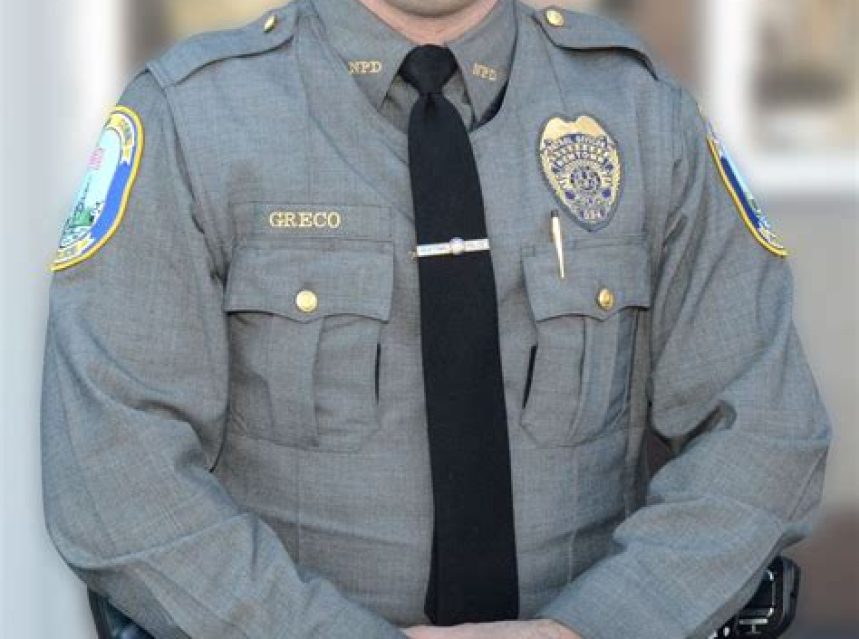Police Officer Uniform

When it comes to law enforcement, the appearance of a police officer plays a crucial role in maintaining the peace and instilling a sense of security within the community. The professional appearance of these dedicated individuals not only commands respect but also serves as a symbol of authority. At the heart of their professional image lies the distinctive police officer uniform. In this blog post, we will explore the purpose, features, and evolution of this iconic uniform. Additionally, we will delve into the benefits that come with standardizing the attire of police officers across different jurisdictions. So, let’s dive into the world of police officer uniforms and understand their significance in detail.
Importance of a professional appearance
Having a professional appearance is of utmost importance, regardless of the field one is in. It goes without saying that it plays a significant role in making a lasting impression on others. This is particularly true for professions where trust, credibility, and authority are crucial, such as law enforcement. When it comes to police officers, their professional appearance is more than just a uniform; it is a symbol of their role and responsibilities in maintaining law and order in society.
One of the key purposes of a police officer uniform is to establish authority and command respect. The uniform itself serves as a visual representation of the power and authority that comes with the role. It signifies that the person wearing it is a figure of authority and is responsible for enforcing the law and ensuring the safety of the community. A professional appearance helps police officers to be easily recognizable and distinguishable from the general public, enabling them to quickly intervene in situations that require their attention or assistance.
Additionally, a professional appearance instills a sense of confidence and trust in the public. When individuals see a police officer in uniform, they feel reassured that someone with the necessary training and knowledge is present to handle any potential danger or threat. The uniform also serves as a visual reminder to the public that there is a system in place to protect them, promoting a sense of security and peace of mind.
Purpose of a police officer uniform
Police officer uniforms serve several important purposes in law enforcement. Firstly, uniforms create a sense of identity and belonging within the police force. When officers wear their uniform, it signifies that they are part of a team and are ready to uphold the law and protect the community. The uniform also helps to establish authority and command respect from citizens.
Secondly, the purpose of a police officer uniform is to provide a clear visual representation of law enforcement. When people see an officer in uniform, they immediately recognize that they are dealing with a police officer and can seek their help or report a crime. The uniform acts as a distinctive symbol of authority, making it easier for civilians to approach officers when they need assistance.
Additionally, police officer uniforms are designed for practicality and functionality. They are specifically tailored to meet the needs and demands of law enforcement duties. For example, uniforms are made from durable materials that are resistant to wear and tear, allowing officers to perform their duties effectively in various weather conditions. The design of the uniform may include multiple pockets to carry essential gear and equipment, ensuring that officers have everything they need readily accessible.
Features of a typical police officer uniform
A police officer’s uniform is much more than just a standard set of clothing. It is a symbol of authority, professionalism, and serves multiple functions to facilitate their duties. The features of a typical police officer uniform are carefully designed to ensure both the safety and the effectiveness of these law enforcement professionals.
One of the key features of a police officer uniform is its visibility. The bright colors, such as navy blue or dark green, make it easily distinguishable even from a distance. This visibility plays a crucial role in quickly identifying law enforcement officers in a crowd or during emergency situations. The use of reflective materials further enhances their visibility, particularly during nighttime operations or when directing traffic.
The second notable feature of a police officer uniform is its practicality. The uniform usually consists of a shirt, trousers, a tie, a jacket, boots, a hat, and a belt. Each of these elements is carefully chosen for its durability, comfort, and functionality. For example, the boots are designed to provide ankle support and grip, essential for officers who may need to chase down a suspect or navigate challenging terrain. The shirt and trousers are usually made from breathable and moisture-wicking fabrics to ensure comfort during long shifts.
Additionally, a typical police officer uniform incorporates various pockets and compartments to carry essential equipment. These pockets are strategically placed to allow easy access to items such as handcuffs, radios, batons, pepper spray, and firearms. The placement and design of these pockets ensure that the equipment can be quickly retrieved when needed while also keeping them securely in place during physical activities.
The use of insignias and badges is another significant feature of a police officer uniform. These serve as a visual representation of an officer’s rank, unit, and authority. The badges are usually made of metal and are prominently displayed on the uniform, often on the chest or shoulders. They not only communicate the officer’s authority but also act as a deterrent to potential criminals. Insignias and other symbols, such as flags or patches, may also be included to signify specialized training or affiliations.
In conclusion, the features of a typical police officer uniform serve a crucial purpose in law enforcement. The visibility, practicality, and incorporation of insignias and badges all contribute to the functionality and professionalism of these uniforms. By carefully considering each aspect, police departments can ensure that their officers are equipped with uniforms that not only instill confidence but also aid in their daily operations.
Evolution of police officer uniforms
Police officer uniforms have gone through significant changes and evolution over the years. These changes have been driven by various factors, including advancements in technology, changing societal norms, and the need for improved functionality and safety for police officers. The evolution of police officer uniforms is a fascinating topic that sheds light on the transformation of law enforcement and the evolving role of police officers in society.
One of the key aspects of the evolution of police officer uniforms is the transition from traditional attire to more modern and functional uniforms. In the past, police officers often wore a basic uniform consisting of a button-up shirt, tie, and hat. However, as the demands of the job increased, so did the need for more practical and durable uniforms. Today, police officers are equipped with uniforms that are designed to provide comfort, mobility, and protection. These modern uniforms are often made from high-quality materials that can withstand various weather conditions and are resistant to tears and stains.
The evolution of police officer uniforms can also be seen in the incorporation of technology and specialized equipment. With the advancement of technology, police officers now have access to a range of gadgets and tools that help them carry out their duties more effectively. These tools include body cameras, radios, and even specialized pockets and compartments for storing essential items. Additionally, the integration of reflective materials and high-visibility markings has improved the visibility of police officers, especially during nighttime operations or in low-light environments.
Another significant aspect of the evolution of police officer uniforms is the emphasis on community policing and building trust with the public. In the past, police uniforms often had a commanding and authoritative appearance, reflecting a more authoritarian approach to law enforcement. However, as community-oriented policing models gained popularity, police uniforms began to reflect a more approachable and friendly image. This shift has been accompanied by changes in color choices, design, and even the addition of community outreach symbols or patches on uniforms.
Below are some key features and changes that have been observed in the evolution of police officer uniforms:
- Functional Design: Modern police uniforms are designed to provide optimum functionality and flexibility to officers while carrying out their duties.
- Improved Safety: Reflective materials and high-visibility markings have been incorporated into uniforms to enhance the safety of police officers, especially during nighttime operations.
- Technology Integration: Police uniforms now often include specialized pockets and compartments to accommodate the use of technology, such as radios and body cameras.
- Community-oriented Appearance: The shift towards community policing has influenced the design and appearance of police uniforms, reflecting a more friendly and approachable image.
- Standardization: The adoption of standardized uniforms across law enforcement agencies helps promote professionalism and unity among officers.
Furthermore, the table below highlights the evolution of police officer uniforms in different time periods:
| Time Period | Main Features |
|---|---|
| 19th Century | Button-up shirts, ties, and hats. |
| 20th Century | Introduction of more practical and durable materials, such as cotton and wool. |
| 21st Century | Incorporation of advanced technology, high-visibility markings, and community-oriented designs. |
The evolution of police officer uniforms reflects the ongoing efforts to provide law enforcement officers with garments that are practical, safe, and conducive to positive community interactions. As police agencies continue to adapt to the changing needs of society, it is likely that police officer uniforms will continue to evolve to meet the demands of the future.
Benefits of standardized uniforms
Standardized uniforms have numerous benefits for various professions, including the police force. These uniforms not only serve as a mode of identification but also play a crucial role in maintaining discipline and professionalism among officers. Implementing a standardized uniform policy brings several advantages that contribute to overall efficiency and effectiveness within the police force.
Firstly, standardized uniforms help to establish a sense of unity and cohesion among police officers. When all officers are dressed in the same attire, it creates a visual representation of teamwork and solidarity. This promotes a strong bond within the force, as officers feel like a part of a collective and are motivated to work towards a common goal.
Moreover, standardized uniforms create a professional appearance, which is essential in law enforcement. The distinct and recognizable attire worn by officers not only showcases their authority and presence but also instills a sense of trust and confidence in the general public. This helps to strengthen the relationship between the police force and the community they serve, leading to improved cooperation and better law enforcement outcomes.
- Enhances officer safety: The use of standardized uniforms helps to enhance officer safety by ensuring their visibility and identification during critical situations. In high-risk scenarios or crowd management situations, a standardized uniform allows officers to be easily identified by their colleagues and prevents any confusion.
- Promotes professionalism: Standardized uniforms contribute to a more professional working environment. By having a dress code that is consistent and aligned with the values and expectations of the profession, officers are encouraged to maintain a high level of professionalism at all times.
- Improves public perception: The use of standardized uniforms helps to improve the public perception of the police force. When officers present a unified and professional appearance, it fosters a sense of trust and respect in the community. This positive perception can ultimately lead to increased cooperation from the public and a safer society as a whole.
| Benefits of Standardized Uniforms |
|---|
| Creates a sense of unity and cohesion among officers |
| Establishes a professional appearance and instills trust in the community |
| Enhances officer safety by ensuring visibility and identification |
| Promotes a more professional working environment |
| Improves the public perception of the police force |
In conclusion, standardized uniforms in the police force bring about various benefits. From enhancing officer safety to promoting professionalism and improving public perception, the use of consistent attire plays a vital role in the overall effectiveness and efficiency of the police force. By implementing standardized uniform policies, law enforcement agencies can create a stronger, more unified force that is better equipped to serve and protect the community.
Frequently Asked Questions
Question 1: Why is a professional appearance important?
A professional appearance is important because it creates a positive impression, establishes credibility, and reflects a sense of responsibility and professionalism.
Question 2: What is the purpose of a police officer uniform?
The purpose of a police officer uniform is to distinguish law enforcement officers from the general public, promote authority and respect, and enhance the visibility and recognition of officers in the community.
Question 3: What are the typical features of a police officer uniform?
A typical police officer uniform includes elements such as a badge, shoulder patches, police department insignia, a utility belt, a hat or cap, trousers or skirts, and footwear designed for comfort and durability.
Question 4: How have police officer uniforms evolved over time?
Police officer uniforms have evolved over time to reflect changes in policing strategies, societal expectations, and advancements in technology and materials. They have become more comfortable, functional, and adapted to various weather conditions.
Question 5: What are the benefits of standardized police uniforms?
Standardized police uniforms offer several benefits, including fostering a sense of unity and teamwork among officers, promoting professionalism and discipline, increasing public trust and confidence, and making it easier for citizens to identify and approach law enforcement personnel.
Question 6: How does a professional appearance impact community relations?
A professional appearance helps build positive community relations by demonstrating that officers take their roles seriously and are committed to upholding the law. It can foster trust, cooperation, and effective communication between the police and the community they serve.
Question 7: Are there any guidelines or regulations for police officer uniforms?
Yes, most police departments have specific guidelines or regulations regarding their officers’ uniforms. These guidelines ensure consistency, professionalism, and adherence to safety standards while allowing for some flexibility based on local needs and conditions.



